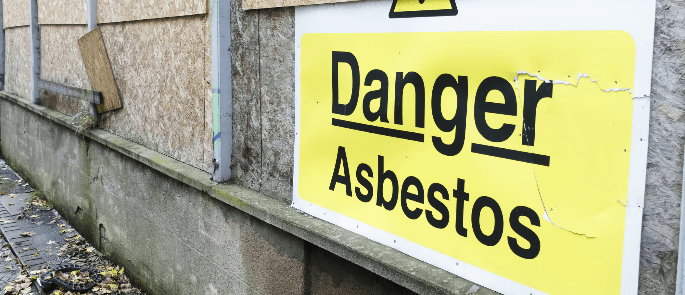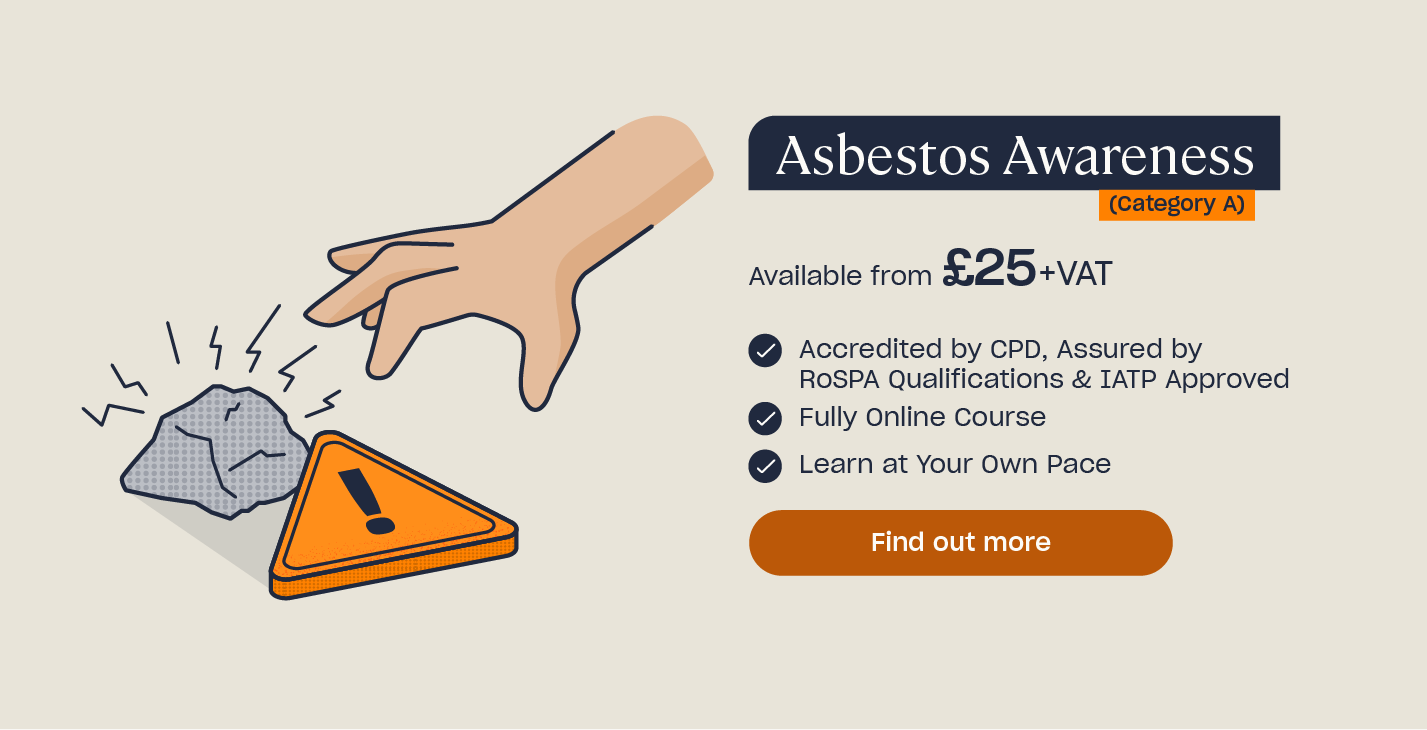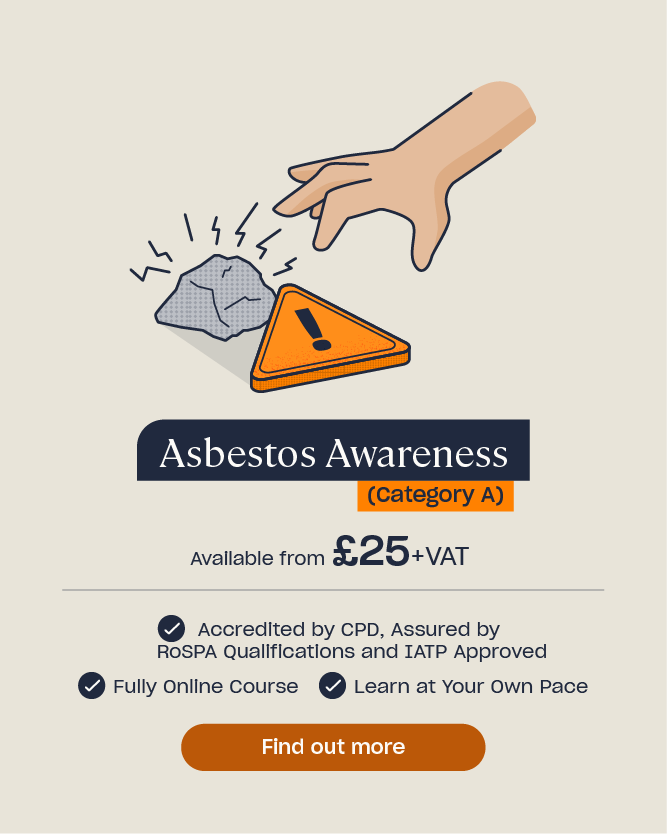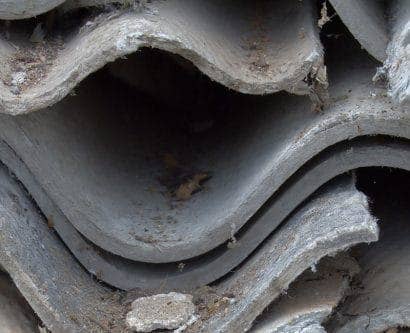What is an Asbestos Management Plan?
Under the Control of Asbestos Regulations 2012, employers and other dutyholders (like landlords and building owners) have a legal duty to manage asbestos containing materials (ACMs) in non-domestic premises. This includes areas such as the common parts of properties, like communal staircases and boiler rooms, as well as buildings such as schools, warehouses, shops and offices.
In this article, we’ll outline what an asbestos management plan is, why asbestos management plans are so important and how they can help to manage the risks of asbestos.

What is an Asbestos Management Plan?
As someone with responsibility for the safety of non-domestic premises, the law states that you have a duty to manage asbestos and therefore names you as the ‘dutyholder’ for that premises. This means that any asbestos present in your building must be identified and managed to prevent it causing any risks to health – something that can be done with an effective asbestos management plan drawn up by a qualified person.
Under the Control of Asbestos Regulations (CAR) 2012, dutyholders are defined as any of the following:
- Owners of non-domestic premises.
- Anyone responsible for a premises – with or without a contract or tenancy agreement.
- Anyone with overall responsibility for maintenance and repairs to a building.
An asbestos management plan helps you to ensure that you’ve carried out an effective asbestos risk assessment. It involves locating the sources of asbestos, assessing the risks to health and determining what action to take as a result – all vital information for anyone who may encounter ACMs as part of their work.
Looking to Learn More?
Do you work in an environment where you may accidentally encounter asbestos or asbestos containing materials? Then our Asbestos Awareness Course is essential for learning more on managing the risks.
Why is an Asbestos Management Plan Important?
Having an asbestos management plan is important because it ensures you are managing the risks from asbestos effectively. It also gives your employees and customers peace of mind, knowing that the legal requirements are being met and that their health is being appropriately safeguarded.
For employees and contractors, your asbestos management plan signals that you have carried out a full asbestos risk assessment of the premises and can confidently state where asbestos is or may be located.
Note that construction, demolition or maintenance work must not begin in a premises until you have an asbestos management plan in place.

Who Needs an Asbestos Management Plan?
An asbestos management plan is needed by both small and large premises, regardless of the type of premises or the number of people who may be present. This includes members of the public, such as customers in a shop, as well as employees.
Asbestos was only used as a building material in premises built before the year 2000 so, if you know for certain that your premises was built after 2000, then it’s much less likely to contain asbestos and an asbestos management plan may not be required. Bear in mind, however, that just because a building is a ‘new build’, it could be built on a brownfield site that is contaminated with asbestos or it may house old equipment or machinery made from asbestos. In all cases, it’s important to never assume that asbestos isn’t present.
The dutyholder can inspect their premises, gather information on previous asbestos surveys and create a basic asbestos register based on their findings, but it’s recommended that a competent asbestos surveyor creates the asbestos management plan for your premises.

Asbestos Management Plan Requirements
Your plan can be a computer document or a written record but it should be easy to read and easy to find by anyone who needs to see it. An asbestos management plan typically includes the following sections:
- Who has responsibility for managing asbestos. The plan must state exactly who is responsible for what, including their name and job title.
- The asbestos register. This states precisely where asbestos is located or might be located in the premises.
- The plan for work involving ACMs. How exactly should work be carried out to avoid disturbing any known or potential asbestos?
- The schedule for monitoring the condition of ACMs. The condition of asbestos containing materials can deteriorate over time and so must be monitored and checked at least annually. Note that any testing for asbestos must be done by a qualified expert and any removal of asbestos must be done by an HSE-licensed asbestos contractor.
- How people will be informed about the plan. This includes everyone who is going to work on the fabric of the building, such as decorators, roofers, plasterers, plumbers, electricians, engineers and surveyors, to name a few.
Your asbestos management plan should be updated by a designated person – usually the dutyholder or another knowledgeable manager – whenever any work is carried out on ACMs in your premises. It’s vital that the plan is up-to-date and that everyone is encouraged to read it before carrying out any sort of work that may disturb asbestos in your premises.

In this article, you’ve learnt about the importance of having an asbestos management plan in place if you are the dutyholder of a non-domestic premises. If disturbed by building work, asbestos can be extremely hazardous to health, so it’s essential that you’ve planned the work correctly and recognise the risks it can present.
Further Resources:
- Asbestos Awareness Course
- What are the Three Types of Asbestos Training?
- How to Conduct an Asbestos Risk Assessment
- Asbestos Quiz
- What is Asbestos Awareness Training & Who Needs it?
- What to Do After Recent Exposure to Asbestos











